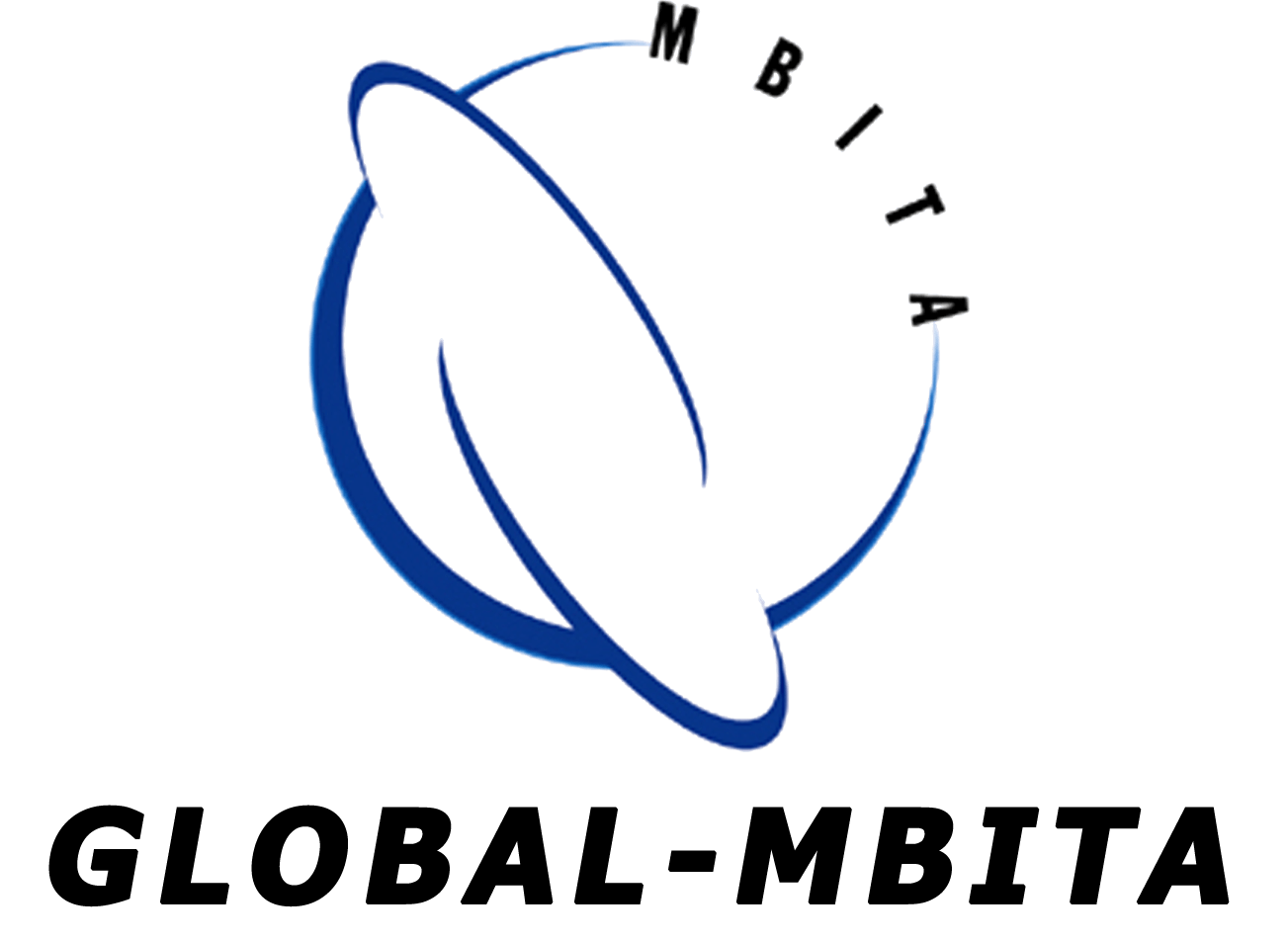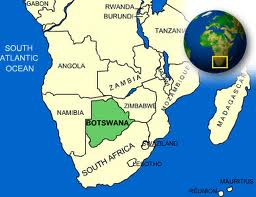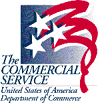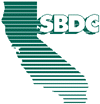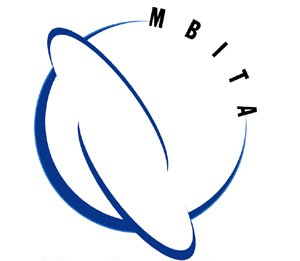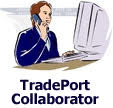UPDATE
This MBITA World TradeWinds eZine issue focuses on the power curve of growth in the export community here in the U.S. and abroad. Articles on EximBank’s aggressive outreach, a timely conference on BRICS, and some breakthrough agriculture projects in Southern Africa which are very indicative of how our world’s development is moving at break-neck speed, even though we are in a challenging global economy. Enjoy!
President
Tony Livoti
MBITA
Vice President
Shay Adams
AIM Medical Sales
Members
Dr. Edward Valeau
Els Group LLC
Hartnell College
President Emeritus
Marcelo Siero
IdeasSiero
Jim Faith
Jim Faith & Associates
Cristina Polesel
MBITA
General Manager
This newsletter has been created by MBITA's editor
Cristina Polesel
cristina@mbita.org
MBITA New Member
Elias Salo Wine Associates
Master Franchisee Expansion into Botswana, Africa - DOC Trade Mission pays Dividends
MBITA member Got Produce? has signed two contracts for its growing franchise operation in Africa.
Private companies need a growth strategy as much as public companies
By MBITA member Mike Viguerie, Partner, Newport Board Group
Most public companies engage in a strategic planning exercise at least every three years. Private companies often skip strategy development, considering it to be theoretical, even bureaucratic. Private companies tend to move quickly to "GOT" (Goals, Objectives and Tactics) due to time constraints and the fact that in most companies, the CEO serves in effect as the part-time chief strategy officer in addition to many other roles. A typical Goal might be to be the leading producer in the industry. An Objective might be to grow 10% in 2013 while a Tactic might be an action to achieve the Objective such as increasing the number of sales professionals. Where's the Strategy?
In essence, Strategy is the journey towards the Goals and Objectives destination.
Companies without an effective strategy often end up in "No Man's Land," the place where growth has slowed or stopped for a variety of reasons:
- Market - the management team struggles to do for customers what the founder had successfully done when the company was small.
- Management - the company has been unable to develop a high-capability management team that can take the company to the next level.
- Model - the company does not have a profitable economic model at a higher scale, and it has not created an infrastructure to support growth and to compete successfully with larger companies.
- Money - the company does not have capital to fund the anticipated level of growth.
Companies can often move out of "No Man's Land" or avoid stagnation by adopting clear and precise growth strategies.
Leveraging Your Product's Life Cycle in International Markets
By Becky DeStigter
Tom sits in his midwest office wondering if he is doing all he can to sell his specialized machinery into international glass markets. His fellow sales directors in nearby companies are trying all sorts of new marketing programs around social media and QR codes. Should he be working to change his company's marketing to keep pace with the times, or can he reach his sales goals and market potential sticking with what seems to work today. As with most questions in international markets, it depends.
The more I work with companies selling products in various points along the Product Life Cycle, the more I believe that your product's life-cycle stage profoundly affects how you market that product. When your markets are in other countries, it is also important to consider that your product may be at different stages in different markets. For instance, Apple's iPads may soon be reaching the Late Majority Stage in the U.S. But in Bangladesh, this product is definitely still considered the domain of Innovators. Apple purposefully innovates in order to keep its focus on Innovators and Early Adopters.
Now back to Tom's dilemma. As a sales director in a technical industry, Tom needs to identify where his products fit in their Product Life Cycle and then leverage that stage to help get the most profits out of international markets. Here are examples on how to do this in every stage of the cycle:
Innovators - The greatest marketing challenge for a product that is so new it's actually innovative? Market education. Internationally, it helps to forget about national borders and focus on amplifying your messages. Try to get publicity and speaking engagements. Attempt to recruit industry thought leaders to try out your new product for a reduced price in exchange for giving a positive testimonial. In the beginning, it's not about where the business comes from, it's about getting ANY business at all.
Early Adopters - Now that at least some in the market know about your type of product, it's time to look for the kind of customers that will take a chance with new technology and ideas. Internationally, it would be wise to identify any industry clusters. These are areas where an industry has an ecosystem with suppliers, producers and oftentimes a local trained workforce. Here are some examples of industry clusters:
- Software Clusters: Bangalore, India; Silicon Valley, USA; Vancouver, Canada; Tel Aviv, Israel.
- Aluminum Can Clusters: Aurangabad, India; Beijing area, China.
- Alternative Energy Clusters: Denver, USA; Munich, Germany; Oslo, Norway.
Focusing on where an industry has several potential clients can save time and financial resources. At this product stage, it is not critical to saturate the market. Instead, it is focusing only on those clients who would be willing to try your new product to hopefully gain competitive advantage over slower-adopting competitors.
Early Majority - You will know that a product or product category has hit the early majority when you no longer have to explain what your product does. People in the industry know about it and more are considering changing over. This is the time to hire and train competent marketing and sales staff who can serve not only your home market, but markets overseas. When it makes sense, hire bilingual staff. In this stage it is not uncommon to see new market entrants or even large industry players watching to see which technologies they would like to acquire from smaller companies. Consider strategic international partnerships to shore up your companies weaknesses. For instance, if you know that India is an important market for your products, consider partnering with an existing Indian company with products compatible to yours to share marketing data and client lists. Consider entering new international markets where the opportunity justifies the initial costs.
Late Majority - By now, markets have begun to saturate. In some markets, new innovations may have already been developed to replace aging products. But many products, particularly in industrial market segments, can successfully remain in late majority for even decades. More than ever, sales and marketing efforts hinge on the business relationship between supplier and customer. Customer service takes on a new level of importance worldwide. Production efficiencies are more critical as price pressures can squeeze profit margins. This may be a time to look at some new international markets, but ONLY where the product is still in an earlier product life stage.
Laggards - If your product happens to have hit the last product stage, hopefully you have extremely loyal customers who appreciate your products and continue to pay to service or support them. Tom may be in this product stage, and he should seriously be considering new product development or acquisition. There is no market growth at this stage, and if there is profit to be made, someone will likely figure out a way to improve your part of the market. If this product is still profitable, it is time to augment your product offering with products that have greater market growth potential.
View article source.
Ayse's Corner
Ayse's Corner is a feature column of the World TradeWinds eZine'. Ayse Oge is a published author and global trade marketing expert and author of Emerging Markets.
European Union - United States - Free Trade Pact
In President Barack Obama's 2013 State of the Union address, he indicated U.S. support for potential free trade pact when he said: "Trade that is free and fair across the Atlantic supports millions of good-paying American jobs." Obama intends to make Trans-Atlantic Trade and Investment the centerpiece of his second term agenda. The Potential Trade Pact also found some committed supporters in Europe, such as German Chancellor Angela Merkel and U.K. Prime Minister David Cameron - both being business leaders and associations on their respective continents. Even AFL-CIO and other labor unions gave the green light to go ahead with the negotiations. Officials said talks could begin as early as June with a goal of reaching the final deal by the end of 2014.
Advantages of the Free Trade Pact:
- Based on the study conducted by the U.S. Chamber of Commerce, eliminating trans-Atlantic tariffs could add $180 billion to combined EU-U.S. gross domestic product over a period of five years. Removing half of the non-tariff barriers to trade would add a further 3% to GDP on both the EU and in the U.S.
- Since subsidiaries of large companies such as supply chains play a huge role in the transatlantic trade, this agreement would allow them to lower their costs and position themselves as formidable global competitors against new multinationals from emerging markets.
- The pact could be conducive in bringing about global rules and standards in a wide range of industries. It could also serve as a guideline for potential trade negotiations with emerging economies such as India and China on regulations, tariffs and investment rules.
However, there are several challenges to overcome during the negotiations of the agreement. The major bone of contention issues revolve around U.S. genetically modified food and hormone-treated beef, the battle over subsidies for Europe's Airbus and U.S.'s Boeing, EU concerns over Internet privacy and flow of electronic data, as well as getting rid of impediments on investment and bidding for public procurement contracts.
A deal will help to jumpstart the ailing European economy to restore growth and bring down deficits, boost American exports, support jobs by enhancing competition, reduce regulatory barriers and level the playing field in the growing market in Asia.
Ayse Oge is a published author and global trade marketing expert. She is the author or the book Emerging Markets. Ayse's Corner is a periodic feature for the World TradeWinds eZine'.
Ayse Oge is President of Ultimate Trade, International Trade Consulting, Speaking and Training. Her work has been featured by Fox Business Online, Bloomberg Business Week Online and she was quoted by Investor's Business Daily and American Express Open Business Online. She is the author of Global Business Guide and a new book, World Wise Children, which helps children develop international skills and qualities needed to create future opportunities and realize their dreams. She is Counselor at SCORE, conducting export seminars and webinars for entrepreneurs and small businesses.
MBITA would like to introduce a new ongoing section called, ‘Finance for Trade’. Feature articles from the experts in trade finance will comment and inform us of this very important aspect of a successful global business.
Ex-Im Bank Signs City/State Partnership With Monterey Bay Export Promoters Supporting Thousands of Jobs
Washington, D.C. - 3/25/2013 - The Export-Import Bank of the United States (Ex-Im Bank) announced a new marketing partnership for the Monterey Bay International Trade Association (MBITA), a non-profit organization in northern California. The City/State Partners program contract will accelerate export business by connecting Bank products and services to MBITA's network of entrepreneurs and financial institutions in the counties around San Francisco and its ports.
Members of MBITA represent small and mid-sized businesses throughout the tri-county region of the Monterey Bay and Silicon Valley. This association helped start the BAYTRADE program in 1995, which generated more than six thousand new jobs during its first five years. MBITA also manages the TradePort Collaborator, an intranet of more than 140 trade promotion service professionals who represent more than 60,000 exporters, importers, trade promotion service providers, and private investors.
"By entering this partnership with MBITA, Ex-Im Bank joins forces with thousands of experienced businesses that share our aim of expanding U.S. exports and creating jobs," said Ex-Im Bank Chairman and President Fred P. Hochberg. "For eighteen years, MBITA has linked business resources with clients throughout the world. Now through our partnership, the Bank adds expanded access to its services and products to help accelerate export sales and job growth."
Tony Livoti, president of MBITA, explained why Ex-Im Bank's City/State Partnership is a boon to high-tech exporters: "MBITA's and TradePort's clients and members tend to be on the cutting edge of technologies," he said. "Sometimes they feel an export-financed transaction into a new foreign marketplace gives them a better footing to grow their companies, as opposed to using their own financing to break into our very competitive domestic markets."
The Monterey Bay trade association started in 1984 as a volunteer-run business, and upgraded to a 501 C-6 corporation in 1995 when it became a founding member of a public-private sector export promotion program called BAYTRADE. The U.S. Department of Commerce helped to support the program, which researched the international trade needs of employers across sixteen Congressional districts. BAYTRADE consolidated its large service and knowledge network into an established global trade website managed by MBITA as TradePort.org for the past six years. MBITA now is a self-sustaining organization funded by memberships, corporate sponsorship, events, and fee-based trade promotion services. It is developing new services such as the California Industrial Cluster Tour and MBITA Strategic Alliance Service.
The purpose of the City/State Partners program is to ensure that the Bank's export finance programs are more accessible to small and medium-sized business through the help of local, state, and regional economic development and business support organizations.
Ex-Im Bank offers to Bay-area enterprises expanded access to products such as its Global Credit Express, which helps exporters acquire low-cost working capital up to $500,000, as well as Express Insurance, which simplifies small business access to export credit risk insurance on their foreign accounts receivable. The Bank has designed an array of low-cost loans, guarantees, export credit insurance, and supply-chain financing structures to enable both small and large businesses to export globally without fear of nonpayment.
ABOUT EX-IM BANK:
Ex-Im Bank is an independent federal agency that helps to create and maintain U.S. jobs by filling gaps in private export financing at no cost to American taxpayers. In the past five years (from Fiscal Year 2008), Ex-Im Bank has earned for U.S. taxpayers nearly $1.6 billion above the cost of operations. The Bank provides a variety of financing mechanisms, including working capital guarantees, export-credit insurance and financing to help foreign buyers purchase U.S. goods and services.
Ex-Im Bank approved a total of $35.8 billion in authorizations in FY 2012 - an all-time Ex-Im record. This total includes more than $6.1 billion directly supporting small-business export sales - also an Ex-Im record. The Bank's authorizations in FY 2012 are supporting an estimated $50 billion in U.S. export sales and about 255,000 American jobs in communities across the country. For more information, visit www.exim.gov
View press release source.
U.S. Export Fact Sheet
January 2013 Export Statistics Released March 7, 2013
EXPORT OVERVIEW:
- With the release of the January 2013 U.S. International Trade in Goods and Services report by the Department of Commerce's U.S. Census Bureau and the Bureau of Economic Analysis, U.S. exports of goods and services decreased by 1.2 percent in January 2013 to $184.5 billion since December 2012, while imports increased 1.8 percent to $228.9 billion during the same period. January exports of other private services were the highest on record, reaching $23.8 billion.
- In January 2013, the year-to-date U.S. goods and services trade deficit improved by 15.0 percent to $44.4 billion when compared to January 2012.
- U.S. goods and services exports year-to-date through January 2013 were up 3.3 percent or $5.8 billion from the same period of 2012 to reach $184.5 billion.
- In January 2013, the average import price per barrel of crude oil was $94.08 per barrel, down from the $95.16 per barrel recorded in December 2012.
TRADE SPOTLIGHT: PANAMA
- On October 31, 2012, the U.S. - Panama Trade Promotion Agreement entered into force eliminating tariffs and other barriers to U.S. exports to Panama. The agreement also provides significant new access to Panama's $22 billion services market, supporting increased opportunities for U.S. service providers.
- The United States was the largest global supplier to the Panamanian market in 2011, with the U.S. supplying one-quarter of Panama's total merchandise imports. Panama is one of the fastest-growing economies in Latin America, expanding 10.6 percent in 2011, 8.5 percent in 2012, and with forecasts of between six to seven percent annual growth through 2017. That adds up to support for more well-paying jobs across the United States.
- In 2012, U.S. goods exports to Panama totaled $9.9 billion, up 20.3 percent from the $8.2 billion exported to Panama in 2011. Panama was the fifth fastest-growing major market (top 30) from 2011 to 2012. YTD January 2013 goods exports to Panama were up 45.4 percent compared to YTD January 2012.
- Between 2006 and 2012, U.S. goods exports to Panama nearly quadrupled, growing from $2.7 billion in 2006 to $9.9 billion in 2012, making Panama our 30th largest export market in 2012.
- In 2012, the largest U.S. merchandise export category to Panama was oil (not crude), at $5.1 billion. Other top export categories included civilian aircraft ($509 million), telephone line equipment ($176 million) and computers ($135 million).
- Between 2011 and 2012, the largest growth categories for U.S. exports to Panama included oil (not crude) (up $1.2 billion), jewelry (up $92 million), and telephone line equipment (up $67 million).
- In 2010 (the latest data available), nearly 9,900 U.S. companies exported goods to Panama, and 86 percent of these firms were Small and Medium-sized (SMEs) with fewer than 500 employees. Of the companies that exported to Panama that year, nearly 30 percent were manufacturers and more than 70 percent of these manufacturers were SMEs.
- By value, exports from SMEs represented 36 percent of U.S. merchandise exports to Panama, higher than the average of 34 percent to the world. In 2010, SMEs shipped more than $2 billion in goods exports to Panama in 2010.
U.S. Export Fact Sheets are prepared by ITA's Office of Trade and Industry Information, (202) 482-3809.
Press release source article
##########
The National Export Strategy is available also at
http://trade.gov/NEI and http://export.gov.
International Trade Update at
http://www.trade.gov/publications/ita-newsletter/
United States Department of Commerce
Office of Public Affairs - Tel. 202-482-4883
##########
MBITA/TradePort event
If you were asked to name the greatest economic powers in today’s global economy, you would be inclined to mention the United States and perhaps the European Union, China, Japan or Germany. However, if you were asked to identify the countries that will be the economic powers in 2050, would you have the same answer?
On May 24th in Monterey, California a group of business professionals from both the public and private sectors will gather at the Monterey Institute of International Studies (MIIS) for a Conference called ‘The BRICS Countries - A Global Growth Powerhouse’, to discuss, debate, interact and present their knowledge and perspectives on what are the best methods for successful bilateral trade and investment between American companies and the booming BRICS marketplace.
What is BRICS? It’s an acronym for Brazil, Russia, India, and China & South Africa. The BRICS countries have formed a political association to increase trade and investment within their own country’s boundaries and with the overall global marketplace. As of 2013, the five BRICS countries represent almost 3 billion people, with a combined nominal GDP of US$14.9 trillion, and an estimated US$4 trillion in combined foreign reserves. Currently the BRICS countries are responsible for over 50% of global economic growth in the last decade. With the exception of the better established markets of China and India, Brazil, Russia and South Africa are just now emerging onto the Global Marketplace ‘radar screen’ of companies everywhere when deciding where to market their goods and services.
What is the BRICS association and what are their combined goals? Is the BRICS alliance a threat to the West or is it a windfall, or both? Can the BRICS countries work through each of their country’s complex issues to unite under an alliance in some form in the coming decades and become the greatest economic power in the world? These topics and others like, the best markets, targeted industry sectors, cultural nuances and public/private sector trade promotion support available to conduct successful trade and investment in the BRICS nations.
"With its impressive growth rates and strong demand for U.S. products, India will continue to represent lucrative opportunities for U.S. companies. However, there remain significant challenges - I look forward to the May 24th conference to highlight the opportunities and pitfalls of exporting to India's growth market", remarked Aileen Nandi, Commercial Officer at the USDOC Silicon Valley U.S. Export Assistance Center.
"As an international board member to Russez.ru in Moscow, our business parks and resorts are Special Economic Zones (SEZs) with all the benefits to make it easy to do business in Russia.The BRICS alliance will be a force to deal with in the coming years and having American companies establish a foothold in Russia through Russez places the company in the center of economic growth for years to come", states Sheridan Tatsuno, author of 'In the Valley of Digital Dreams' and founder of DreamScape Global who will be speaking on Russia at the conference.
“I look forward to sharing both the opportunities and pitfalls of doing business with the most American-friendly of the BRICS, India." said Gunjan Bagla, who is the author of the top-rated book on Doing Business in India and recently wrote an article for the Harvard Business Review on the same subject.
"China's commodity driven demand for Brazil's iron ore, oil, soy, and pulp displaced the US as Brazil's number one trading partner in the first decade of the 21st century. Can the US regain its position and what role can California economy play?" remarks Stephen Scheibe of Allabroad.org who will be speaking at the conference on Brazil.
"Our 20 years in BRICS markets suggest South Africa has an exceptionally sophisticated infrastructure, making it the perfect "hub" for American companies to do business throughout the African continent. Its complex, diverse nature enables U.S. businesses to "pilot test" what it's like to do business in Africa,” commented conference speaker, Lucie Newcomb, President & Chief Executive Officer of The NewComm Global Group, Inc.
"American companies in general need to act now to position its leading technologies and know-how into the BRICS marketplace which will mean new jobs for us and a more peaceful and stabilized world for us all”, states Tony Livoti President of MBITA/TradePort who are organizing the event.
For online registration, EXHIBIT and SPONSORSHIP OPPORTUNITIES visit the event web site.
MBITA/TradePort event
The Monterey Bay Region - Like No Other
On May 2nd at the Agricultural Commissioner’s office in Salinas, Ca., a 3rd event in succession will take place on how the Monterey Bay region of California can develop a ‘branding’ and ‘marketing’ program .for the domestic and global marketplace. This 3rd event is entitled The Monterey Bay Region - Like No Other.
Last year Congressman Sam Farr, Ca., 20th Congressional District, participated in the first two events that took place in both Monterey and Santa Cruz where business and private sector leaders from the region presented, debated and commented on the travel & tourism industry, sustainability, business development, global trade and the agriculture industries in the tri-county region of the Monterey Bay, and how they all could participate in an inclusive, collaborative, regional, branding and marketing program that will benefit all involved.
Since the last event in Santa Cruz last October 'branding' suggestions, such as, 'The Monterey Bay - Where the Magnificence of Big Sur Meets the Brilliance of Silicon Valley' or,'The Monterey Bay - The Heart of California, Where It All Began', have emerged and are now part of an online polling service provided by Civinomics in Santa Cruz, Ca. who will report on its early findings at the event on their outreach to the public on ideas and suggestions about this ongoing project.
Congressman Sam Farr will again lead this 3rd event in Salinas, Ca. and will feature panels and presentations on Marine Science, Language, Agriculture and economic development with a focus on the ideas and comments from representatives of the region’s leading industries on how the public and private sector communities from the entire tri-county Monterey Bay region can collectively come together on a ‘marketing’ and ‘branding’ program.
"There is no place in the world like the Monterey Bay and we as a region have so much to offer the marketplace as global leaders in language, institutional research, agriculture, agro-technology and organic agriculture, sustainability and marine science, not to mention travel and tourism and the unparalleled natural beauty of the Monterey Bay", states Tony Livoti of the Monterey Bay International Trade Association (MBITA) and TradePort.org who are organizing the event and leading this project in partnership with the Monterey County Business Council (MCBC), Joint Venture Monterey Bay (JVMB) and WassonIdea Farming in Aptos, California.
"It is extremely important that we speak as a region when we present our assets to the global marketplace. This forum helps to model good behavior among the partners”, says Maryann Leffel, CEO of MCBC.
“When you imagine the ideal image for this region, what does it look like? Can we collectively create and promote a vision of the entire Monterey Bay region that puts us on the Global map like the Riviera or Silicon Valley? Why not? Teaming with the incredible talent and visionaries of the Monterey Bay, we just need to think outside the box then get started and stick with it.”, states Alec Wasson of WassonIdea Farming.
For online registration, EXHIBIT and SPONSORSHIP OPPORTUNITIES visit the event web site.
Sponsors, Partners, & Affiliates
